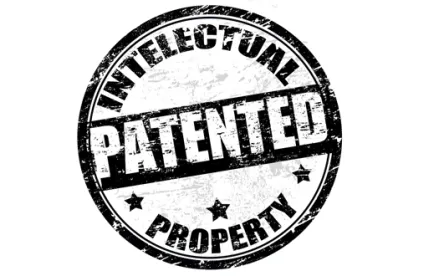In a decision with potential far-reaching implications, Arthrex, Inc. v. Smith & Nephew, Inc., the Federal Circuit held Thursday that appointments of Administrative Patent Judges (“APJs”) of the Patent Trial and Appeal Board’s (“PTAB” or “Board”), who administer inter partes reviews (“IPR”), post grant reviews (“PGR”), and covered business method (“CBM”) reviews, violated the Appointments Clause of the U.S. Constitution. As a result, the Federal Circuit remanded the final written decision in Arthrex back to the PTAB and ordered a new panel be constituted to rehear the IPR. However, rather than strike the entire authorizing statute, the Federal Circuit severed a portion of the statute in an attempt to avoid crashing the entire statutory scheme. We have already seen recent final written decisions remanded back to the PTAB in light of Arthrex.
The decision came from Arthrex, Inc.’s appeal from a final written decision holding certain claims of its U.S. Patent No. 9,179,907 unpatentable as anticipated. On appeal, Arthrex argued that the appointment of the Board’s APJs by the Secretary of Commerce as proscribed by Title 35 violated the Appointments Clause of the U.S. Constitution because APJs are “principal officers” who must be, but were not, appointed by the President with the advice and consent of the Senate. The Federal Circuit agreed, vacating and remanding the final written decision at issue on this basis.
“Officers of the United States” are those officials who exercise significant authority pursuant to the laws of the United States. Given APJs’ powers to oversee discovery, apply the rules of evidence, hear oral arguments, and ultimately decide the patentability of patent claims, it was undisputed that APJs are officers of the United States. The issue before the Federal Circuit boiled to down to whether APJs should be considered principal or inferior officers—the former requiring appointment by the President, with advice and consent of the Senate, rather than merely the Secretary of Commerce.
The Federal Circuit determined that, as the statute was written, APJs were indeed principal officers. There are three primary factors considered to determine whether an official is principal or inferior, referred to as the Edmond factors: (1) whether an appointed official has the power to review and reverse the officers’ decision; (2) the level of supervision and oversight an appointed official has over the officers; and (3) the appointed official’s power to remove the officers. The only two presidentially appointed officers that provide direction to the USPTO are the Director and the Secretary of Commerce. The Court concluded upon review of the Edmond factors that neither the Director of the U.S. Patent and Trademark Office (“USPTO”) nor the Secretary of Commerce, individually or combined, exercise the sufficient direction and supervision over APJs to render them inferior officers.
With regard to the Review Power, the Court noted that “[n]o presidentially-appointed officer has independent statutory authority to review a final written decision by the APJs before the decision issues on behalf of the United States.” It found that the Director’s ability to act as an intervenor in appeals to the Federal Circuit and convene the Precedential Opinion Panel were insufficient to render APJs inferior officers.
With regard to the Removal Power, the Court noted that the Secretary of Commerce and the Director lack unfettered removal authority. The Court rejected the Government’s analogy of the Director’s power to designate a panel of APJs to the power of the Judge Advocate General in Edmond to remove a military judge without cause. It reasoned that under Title 35, the Director has the authority to remove an APJ “only for such cause as will promote the efficiency of the service.” The Court determined that because the APJs issue decisions that are final on behalf of the Executive Branch, that are not reviewed by the Director, and cannot be removed without cause, the supervision and control over APJs by appointed Executive Branch officers weighed in favor of finding the APJs principal officers.
Based on the weighing of the Edmond factors, the Court determined that the APJs are principal officers required to be appointed by the President. To remedy the unconstitutional appointment of the APJs, rather than strike the entire statutory scheme, the Court severed the portion of the statute controlling APJs’ removal, such that the Director can remove APJs at will.
If the Supreme Court is to hear this issue, it is possible it will find the Federal Circuit’s holding insufficient to remedy the issue the panel identified. While allowing removal of APJs without cause addresses the final Edmond factor (whether an appointed official can remove the officer), it does nothing to address the Director’s lack of power of review over the APJ’s decisions discussed at length by the Federal Circuit. Arguably, the Federal Circuit’s surgical severing of the removal restrictions of APJs from the statute does not completely remedy the Appointments Clause deficiency identified by the Federal Circuit. It remains the case that the Director does not have authority to review each final written decision; and even if the Director convened a Precedential Opinion Panel, he would remain one of many panelists rendering a decision, with no guarantee that the Director’s view would be in the majority.
What is clear is that we can certainly expect that all appeals from final written decisions invalidating patent claims currently pending before the Federal Circuit will include an Appointments Clause challenge in their briefing in an attempt to vacate and remand the decision. Until the Federal Circuit’s invalidation of the removal restrictions of APJs, apparently all inter partes review decisions were issued by a panel of judges that were not constitutionally appointed at the time the decision was rendered, thus subjecting those decisions to the same remedy applied here. In the meantime, a petition for en banc review is certainly forthcoming, as well as a petition for Supreme Court review of that en banc decision. This shakeup of inter partes review practice is not even close to over, and we will continue to monitor this major development.







 />i
/>i
